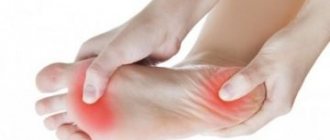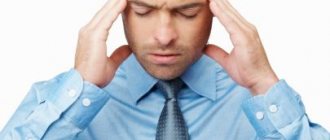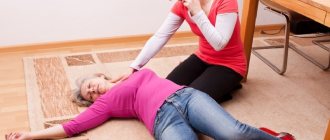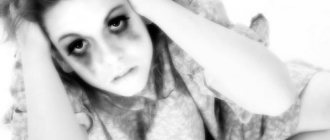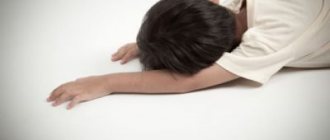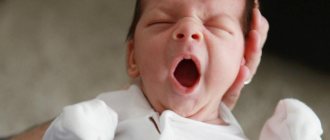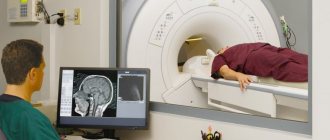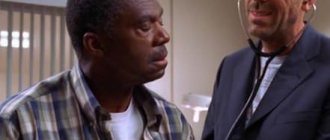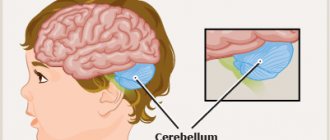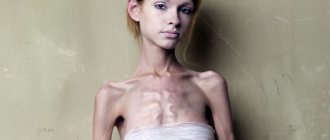Psychomotor agitation occurs during acute mental disorders and is manifested by increased motor activity, which can be accompanied by confusion, anxiety, aggressiveness, fun, hallucinations, confusion, delirium, etc. Read more about what this condition is, why it can occur and how it is treated will be discussed later in the article.
Main signs of psychomotor agitation
The state of psychomotor agitation is characterized by an acute onset, a pronounced disturbance of consciousness and motor restlessness (this can be either fussiness or destructive impulsive actions). The patient may experience euphoria or, on the contrary, anxiety and fear.
His movements acquire a chaotic, inadequate character, they may be accompanied by speech excitement - verbosity, sometimes in the form of a continuous stream of words with shouting of individual sounds or phrases. The patient may be haunted by hallucinations, he experiences clouding of consciousness, and his thinking becomes accelerated and disorganized (dissociative). Aggression occurs, directed both at others and at oneself (suicidal attempts). By the way, the patient has no criticism of his condition.
As is clear from the listed symptoms, the patient’s well-being is dangerous and requires urgent medical attention. But what could lead to this state of affairs?
Causes of the disorder
Psychomotor agitation syndrome in its classical form does not manifest itself in psychopathologically examined, healthy individuals. The factor in its appearance is a special mental readiness for mental agitation.
Almost any psychiatric pathology can cause psychomotor agitation with different underlying causes. Major psychiatric disorders are common causes. It is very often formed during moments of hallucinatory experiences and delusional formation. This condition is very typical in schizophrenia and similar pathologies. A subtype of schizophrenia affects psychomotor agitation, it can be different: paranoid, catatonic or hebephrenic. Any of these are symptomatic of schizophrenia.
Often, such a psychomotor state can also form during neurotic conditions; the development of excitement directly correlates with the level of anxiety and the neurotic component. In reactive stress conditions, after experiencing something seriously traumatic, it can form. Formation is often triggered by injury, some terrible event or accident.
Psychomotor agitation syndrome can occur due to certain somatic pathologies. This is a very common companion to myocardial infarction. This disorder is likely to form during prolonged infectious diseases, the most dangerous for this is their acute period. Intoxication pathologies lead to pronounced psychomotor agitation; pathologies involving the nervous system are the most predictive of this.
It can also form during traumatic brain injury. Moreover, at any stage of progression of TBI, everything depends on the correctness of relief. And even after a long time, such a person is much more irritable than her healthy peers.
In addition, epileptic states are also characterized by psychomotor agitation, especially delirious epileptic stupefaction and a state of twilight clouding of the psyche. Various automatisms and some auras in epilepsy can also be accompanied by psychomotor agitation.
A state of psychomotor agitation can form during intoxication due to drug addiction or alcohol abuse. Often this condition also forms during the period of abstinence, and becomes especially pronounced at the time of delirium tremens, that is, alcoholic delirium. In general, among states of clouding of consciousness, delirium is the most dangerous in terms of manifestations of psychomotor agitation. Delirium of this etiology can last quite a long time, which further increases the risk of psychomotor agitation.
Hysterical neuroses are often manifested by such excitement. Chronic delirium that turns into a disorder can also be the root cause. Psychomotor agitation may occur in individuals with mania, especially in severe manic states. In general, with the appearance of various types of depressive states, psychomotor agitation in a state of agitation is also possible.
The syndrome of psychomotor agitation is also characteristic of borderline states, in particular in a state of mental imbalance. It often occurs with a type of personality disorder, especially in hot-tempered personality types.
Causes of psychomotor agitation
Acute psychomotor agitation can be provoked by a variety of reasons, both severe stress and organic brain damage (for example, epilepsy).
Most often it occurs:
- when a mentally healthy person remains in a state of panic for a long time or as a result of a life-threatening situation he has suffered (for example, after a car accident, so-called reactive psychosis may develop);
- for acute or chronic alcohol intoxication, as well as for poisoning with caffeine, quinine, atropine, etc.;
- after emerging from a comatose state or after traumatic brain injuries that provoked pathological damage to areas of the brain;
- may be a consequence of damage to the central nervous system by toxins, as a result of a severe infectious disease;
- with hysteria;
- often occurs in mental illnesses: schizophrenia, depressive psychosis, manic agitation or bipolar affective disorder.
Degrees of severity of psychomotor agitation
In medicine, psychomotor agitation is divided into three degrees of severity.
- Mild degree. Patients in this case only look unusually animated.
- The average degree is expressed in manifestations of lack of purpose in their speech and actions. Actions become unexpected, pronounced affective disorders appear (gaiety, anger, melancholy, malice, etc.).
- A sharp degree of excitement is manifested by extreme chaotic speech and movements, as well as clouding of consciousness.
By the way, how this excitement manifests itself depends to a large extent on the age of the patient. Thus, in childhood or old age it is accompanied by monotonous speech or motor acts.
In children, this is monotonous crying, screaming, laughing or repeating the same questions, rocking, grimacing or smacking is possible. And in elderly patients, excitement manifests itself as fussiness, with an air of businesslike concern and complacent talkativeness. But in such situations, manifestations of irritability or anxiety, accompanied by grumpiness, are also common.
Types of psychomotor agitation
Depending on the nature of the patient’s excitation, different types of this condition are differentiated.
- Hallucinatory-delusional arousal – characterized by feelings of fear, anxiety, confusion or anger and tension. Patients can talk to an invisible interlocutor, answer their questions, listen to something, and in other cases - attack imaginary enemies or, on the contrary, flee from them, not understanding the road and obvious obstacles.
- Catatonic psychomotor agitation - its symptoms manifest themselves in the randomness and lack of purposefulness of the patient's movements - they are sudden, meaningless and impulsive, with transitions from excitement to stupor. The patient is foolish, grimaces, behaves ridiculously and mannered.
- Manic excitement is expressed by transitions from gaiety to anger, irritability and malice. The patient cannot sit still - he sings, dances, interferes in everything, takes on everything and does not complete anything. He speaks quickly, continuously, constantly changing the topic and not finishing sentences. He clearly overestimates his capabilities, can express ideas of greatness, and show aggression when objecting.
Several more types of psychomotor agitation
In addition to those listed above, there are several other types of psychomotor agitation that can develop in both a healthy person and someone with organic brain damage.
- Thus, epileptic agitation is characteristic of the twilight state of consciousness in patients with epilepsy. It is accompanied by an angry-aggressive affect, complete disorientation, and the impossibility of contact. Its beginning and end, as a rule, are sudden, and the condition can reach a high degree of danger for others, since the patient can attack them and cause severe damage, as well as destroy everything that he encounters along the way.
- Psychogenic psychomotor agitation occurs immediately after acute stressful situations (disaster, wreck, etc.). It is expressed by varying degrees of motor restlessness. This can be monotonous excitement with inarticulate sounds, or chaotic excitement with panic, flight, self-mutilation, and attempted suicide. Often excitement gives way to stupor. By the way, during mass disasters, a similar state can affect large groups of people, becoming common.
- Psychopathic arousal is superficially similar to psychogenic, since it also occurs under the influence of external factors, but the strength of the response in this case, as a rule, does not correspond to the cause that caused it. This condition is associated with the psychopathic characteristics of the patient’s character.
Motor excitement
Apathy
Stupor
Stupor is a type of movement disorder in psychiatry, which is complete immobility with mutism and weakened reactions to irritation, including pain.
Emotional stupor (from the Latin emovere - excite, excite and stupor - numbness) is a condition that occurs under the influence of strong mental shocks (horror, fear, threat to life) and manifests itself in the form of blocking affective activity, motor activity, slowing down mental activity. This condition may resolve without significant consequences. But a panic state with a desire for chaotic actions (for example, escape), as well as depression, may occur. It occurs in soldiers in battle, participants and witnesses of disasters, and in children - most often in exam situations, when too great demands are placed on them (fear of exams).
Stupor is one of the body's most powerful defense reactions. Occurs after severe nervous shocks (earthquake, explosion, attack, brutal violence), when a person has spent so much energy on survival that he no longer has the strength to contact the outside world.
Stupor can last from several minutes to several hours. Therefore, if help is not provided and the victim remains in this state for a long time, this will lead to his physical exhaustion. Since there is no contact with the outside world, the victim will not notice the danger and will not take action to avoid it.
SIGNS
- a sharp decrease or absence of voluntary movements and speech
- lack of reactions to external stimuli (noise, light, touch, pinching)
- freezing" in a certain position, numbness, a state of complete immobility
- possible tension of individual muscle groups
Help
- Bend the victim's fingers on both hands and press them to the base of the palm. The thumbs should be pointed outwards.
- Using the tips of your thumb and forefinger, massage the victim’s points located on the forehead, above the eyes, exactly halfway between the hairline and eyebrows, clearly above the pupils. massaging active points - on the forehead at the hairline or at the point where the thumb originates
- Place the palm of your free hand on the victim’s chest. Match your breathing to the rhythm of his breathing.
- A person, while in a stupor, can hear and see. Therefore, speak into his ear quietly, slowly and clearly what can evoke strong emotions (preferably negative).
Remember! It is necessary to achieve a reaction from the victim by any means, to bring him out of his stupor.
Apathy (from the Greek apatheia - insensibility) is an indifferent, indifferent attitude towards the environment. This is a mental state in which internal motivations, interests, and emotional reactions are reduced or completely lost.
Apathy can be a life-saving defense in extreme situations: by bringing thinking into a neutral state, you can avoid both despair and exhaustion caused by unfulfilled hopes.
Apathy can occur after prolonged intense but unsuccessful work; or in a situation where a person suffers a serious failure and ceases to see the meaning of his activities; or when it was not possible to save someone, and the person in trouble died. A feeling of fatigue sets in - such that you don’t want to move or speak: movements and words come with great difficulty. There is emptiness, indifference in the soul, there is no strength even to show feelings. If a person is left without support and help in this state, then apathy can turn into depression (severe and painful emotions, passivity of behavior, guilt, a feeling of helplessness in the face of life's difficulties, hopelessness, etc.).
A person can remain in a state of apathy from several hours to several weeks.
SIGNS
- indifferent attitude towards the environment
- lethargy, lethargy
- speech is slow, with long pauses
HELP
- Talk to the victim. Ask him a few simple questions based on whether he is familiar to you or not. "WHAT IS YOUR NAME?" "HOW DO YOU FEEL?" "DO YOU WANT TO EAT?"
- Take the victim to a place of rest, help him get comfortable (be sure to take off his shoes).
- Take the victim's hand or place your hand on his forehead.
- Give the victim the opportunity to sleep or just lie down.
- If there is no opportunity to rest (an incident on the street, on public transport, waiting for the end of the operation in the hospital), then talk more with the victim, involve him in any joint activity (take a walk, go for tea or coffee, help others who need help).
Sometimes the shock from a critical situation (explosions, natural disasters) is so strong that a person simply ceases to understand what is happening around him. He is unable to determine where the enemies are and where the helpers are, where the danger is and where the salvation is. A person loses the ability to think logically and make decisions, and becomes like an animal rushing around in a cage.
“I ran, and when I came to my senses, it turned out that I didn’t know where I was.”
“I did something, talked to someone, but I can’t remember anything.”
SIGNS:
- sudden movements, often aimless and meaningless actions
- abnormally loud speech or increased speech activity (the person talks non-stop, sometimes completely meaninglessly)
- there is often no reaction to others (to comments, requests, orders)
Remember! The victim may cause harm to himself and others.
HELP
- Use the “grab” technique: from behind, insert your hands under the victim’s armpits, press him towards you and slightly tip him over.
- Isolate the victim from others.
- Massage the victim’s “positive” points. Speak in a calm voice about the feelings he is experiencing. (“Do you want to do something to make this stop? Do you want to run away, hide from what’s happening?”)
- Do not argue with the victim, do not ask questions, in conversation avoid phrases with the particle “no” that relate to unwanted actions (“Don’t run”, “Don’t wave your arms”, “Don’t shout”).
Motor excitement usually does not last long and can be replaced by nervous tremors, crying, and aggressive behavior.
How to provide emergency care for acute psychomotor agitation
If a person exhibits psychomotor agitation, emergency assistance is necessary immediately, since the patient can injure himself and others. To do this, all strangers are asked to leave the room where he is located.
They communicate with the patient calmly and confidently. It should be isolated in a separate room, which is first inspected: windows and doors are closed, sharp objects and anything that can cause a blow are removed. A psychiatric team is urgently called.
Before her arrival, you should try to distract the patient (this advice does not apply to the twilight state, since the patient is not contactable), and, if necessary, immobilize.
Symptoms and diagnostic methods
A personal conversation between a doctor and a patient is one of the ways to identify symptoms of psychomotor agitation
Since psychomotor agitation is not a separate disease, the task of professional diagnostics is to find the root cause of this pathology. To do this, a specialist can use the following techniques:
- Conversation with the patient.
- Carrying out tests.
- Modeling situations to search for a potential stimulus.
Providing assistance in immobilizing the patient
Psychomotor agitation, the symptoms of which were discussed above, often requires the use of restraint measures. This usually requires the help of 3-4 people. They approach from behind and from the sides, hold the patient's arms pressed to the chest and sharply pick him up under the knees, thus placing him on a bed or couch, previously moved away from the wall so that it can be approached from 2 sides.
If the patient resists by waving an object, then assistants are recommended to hold blankets, pillows or mattresses in front of them. One of them should throw a blanket over the patient's face, this will help put him on the bed. Sometimes you have to hold your head, for which you throw a towel (preferably damp) over your forehead and pull it to the bed by the ends.
It is important to be careful when holding it to avoid causing damage.
Notes
- Stahl SM, Morrissette DA, Faedda G., Fava M., Goldberg JF, Keck PE, Lee Y., Malhi G., Marangoni C., McElroy SL, Ostacher M., Rosenblat JD, Solé E., Suppes T., Takeshima M., Thase M.E., Vieta E., Young A., Zimmerman M., McIntyre RS
Guidelines for the recognition and management of mixed depression. (English) // CNS Spectrums. — 2020. — April (vol. 22, no. 2). - P. 203-219. - doi:10.1017/S1092852917000165. — PMID 28421980. [] - Sani G., Napoletano F., Vöhringer PA, Sullivan M., Simonetti A., Koukopoulos A., Danese E., Girardi P., Ghaemi N.
Mixed depression: clinical features and predictors of its onset associated with antidepressant use. (English) // Psychotherapy And Psychosomatics. — 2014. — Vol. 83, no. 4. - P. 213-221. - doi:10.1159/000358808. — PMID 24970376. [] - V. G. Kukes.
Clinical pharmacology. — 3rd ed., revised. and additional - M.: GEOTAR-Media, 2006. - P. 724. - 944 p. — ISBN 5-9704-0287-7.
Features of providing assistance with psychomotor agitation
Drug assistance for psychomotor agitation should be provided in a hospital setting. For the period while the patient is transported there, and for the time until the drugs begin to take effect, temporary use of restraint is permitted (which is recorded in medical documents). In this case, the following mandatory rules are observed:
- when applying restraint measures, use only soft materials (towels, sheets, fabric belts, etc.);
- securely fix each limb and shoulder girdle, since otherwise the patient can easily free himself;
- compression of nerve trunks and blood vessels should not be allowed, because this can lead to dangerous conditions;
- The fixed patient is not left unattended.
After the effect of neuroleptics, he is released from fixation, but observation should be continued, since the condition remains unstable and a new attack of excitement may occur.
Treatment of psychomotor agitation
To relieve the severity of an attack, a patient with any psychosis is given sedatives: “Seduxen” - intravenously, “Barbital-sodium” - intramuscularly, “Aminazine” (iv or i.m.). If the patient can take drugs orally, then he is prescribed Phenobarbital, Seduxen or Aminazine tablets.
The antipsychotics Clozapine, Zuk-lopentixol and Levomepromazine are no less effective. It is very important to monitor the patient’s blood pressure, since these drugs can cause a decrease in it.
In a somatic hospital, treatment of psychomotor agitation is also carried out with drugs used for anesthesia (Droperidol and sodium hydroxybutyrate solution with glucose) with mandatory monitoring of respiration and blood pressure. And for weakened or elderly patients, tranquilizers are used: Tiapride, Diazepam, Midazolam.
Treatment
- Immediate hospitalization in a psychiatric hospital and isolation of the patient. If necessary, restrain him (tying him up, tying him to a bed, using a straitjacket), since these patients are dangerous to others.
- Use of tranquilizers and neuroleptics: haloperidol, aminazine, hydrochloride, diazepam, sodium hydroxybutyrate, tizercin, chlorprothixene. For severe psychomotor agitation in manic or psychotic patients, it is recommended to prescribe the tranquilizers phenazepam, diazepam, lorazepam or clonazepam in combination with antipsychotics and lithium preparations[3].
Reducing agitation and temporarily calming the patient should not reduce the intensity of treatment and monitoring of the patient, since agitation can resume with the same intensity.
Use of drugs depending on the type of psychosis
As a rule, a newly admitted patient is prescribed general sedatives, but after the diagnosis has been clarified, further relief of psychomotor agitation will directly depend on its type. Thus, for hallucinatory-delusional excitation, the drugs “Haloperidol” and “Stelazine” are prescribed, and for manic arousal, the drugs “Clopixol” and “Lithium Oxybutyrate” are effective. The reactive state is relieved with the drugs "Aminazin", "Tizercin" or "Phenazepam", and catotonic agitation is cured with the drug "Mazhepril".
Specialized medications are combined, if necessary, with general sedatives, adjusting the dose.

